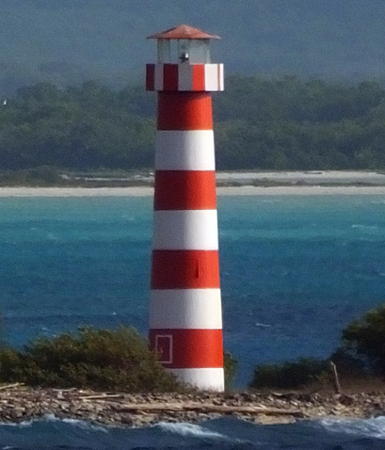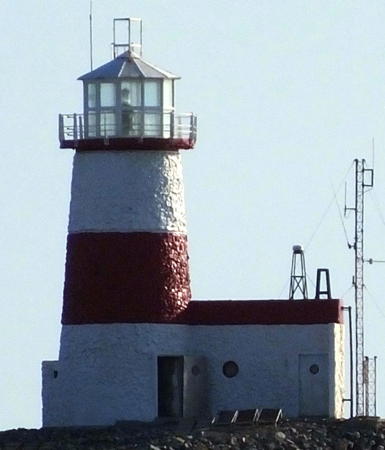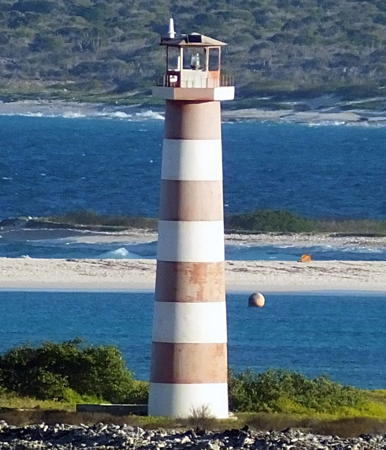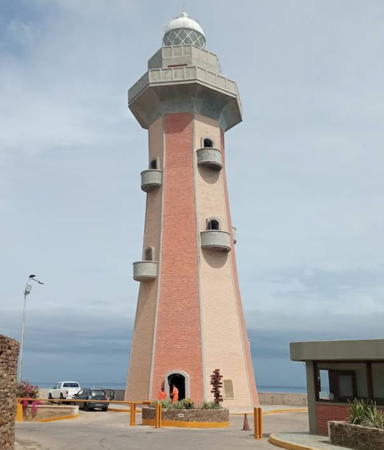Located on the north coast of South America, the Bolivarian Republic of Venezuela was colonized by Spain early in the 16th century and was ruled as part of the Viceroyalty of New Granada until the viceroyalty won its independence in a complex struggle in 1810-1819. The former viceroyalty, known as Gran Colombia, fell apart in 1831, creating the nations of Colombia, Venezuela, and Ecuador.
Venezuela has a long coastline facing the Caribbean Sea. In addition, Venezuela administers a number of islands in the westward extension of the Lesser Antilles chain. Geographers call these islands the Leeward Antilles, from the Dutch Benedenwindse Eilanden; the chain also includes the Dutch islands of Bonaire, Curaçao, and Aruba. This page lists the lighthouses of the Venezuelan Leeward Antilles.
Venezuela is a federal republic with 23 states and a capital district. The Isla de Margarita and associated smaller islands comprise the state of Nueva Esparta; the smaller, mostly unpopulated islands are governed as federal territories (Dependencias Federales).
The word for a lighthouse is faro in Spanish; smaller lighthouses are often called balizas (beacons). In Spanish isla is an island, cabo is a cape, punta is a promontory or point of land, péñon is a rock, arrecife is a reef, bahía is a bay, ría is an estuary or inlet, estrecho is a strait, río is a river, and puerto is a port or harbor.
Active lighthouses in Venezuela are owned by the navy and managed by the Oficina Coordinadora de Hidrografía y Navegación (OCHINA).
Special note: Following the election of President Nicolás Maduro in 2013 economic conditions in Venezuela deteriorated, leading to an outbreak of civil unrest. As of this revision (June 2025) the country is still not safe for tourists and other visitors.
ARLHS numbers are from the ARLHS World List of Lights. Admiralty numbers are from volume J of the Admiralty List of Lights & Fog Signals. U.S. NGA numbers are from Publication 110.
- General Sources
- Online List of Lights - Leeward Antilles and Isla Aves
- Photos by various photographers posted by Alexander Trabas. The Venezuelan Caribbean photos are by Rainer Arndt, Capt. Theo Hinrichs ("Capt. Theo"), and Capt. Peter Mosselberger ("Capt. Peter").
- Lighthouses in Venezuela
- Photos by various photographers available from Wikimedia.
- World of Lighthouses - Venezuela
- Photos by various photographers available from Lightphotos.net.
- Anexo: Faros de Venezuela
- Articles and photos from the Spanish edition of Wikipedia.
- World Lights - Venezuela
- Historic postcard images posted by Michel Forand.
- Leuchttürme Südamerikas auf historischen Postkarten
- Historic postcard images posted by Klaus Huelse.

Punta Sebastopol Light, Islas los Roques, July 2014
photo copyright Capt. Peter Mosselberger; used by permission








